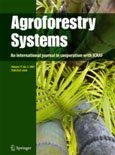Indigenous trees play key roles in West African landscapes, such as the néré tree (Parkia biglobosa (Jacq.) R.Br. ex G.Don). We applied social–ecological network analysis to understand the social–ecological interactions around néré. We documented the benefits néré provides and the multiple social interactions it creates amongst a large range of actors. The flows of rights over the trees and benefits from them formed two hierarchical networks, or cascades, with different actors at the top. The two forms of power revealed by the two cascades of rights and benefits suggest possible powers and counter-powers across gender, ethnicity, and age. We documented how the tree catalyses social interactions across diverse groups to sustain vital social connections, and co-constitute places, culture, and relationships. We argue that a paradigm shift is urgently needed to leverage the remarkable untapped potential of indigenous trees and Cultural Keystone Species in current global restoration and climate change agendas.
Download:
DOI:
https://doi.org/10.1007/s13280-022-01733-z
Altmetric score:
Dimensions Citation Count:
























